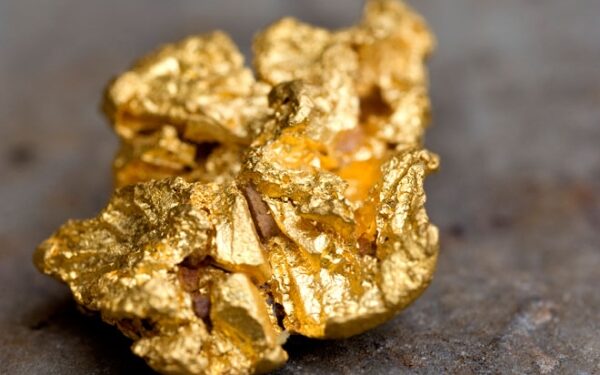Gold, Manganese production decline by 12% and 56% – Report
While gold and manganese faced setbacks, Ghana’s bauxite production experienced a modest growth rate.
- Advertisement -
Ghana, a prominent player in the global extractive industries sector, has faced challenges in its gold and manganese production, while witnessing a modest growth in bauxite output. The recently released 2022 Extractive Industries Transparency Initiative (EITI) Mining & Oil and Gas report sheds light on the decline in gold and manganese production, with gold experiencing a downturn of 12 percent and manganese witnessing a significant decrease of 56 percent.
However, the report also indicates a positive trend in bauxite production, with a 4 percent year-on-year growth. These findings come as the Multi-Stakeholder Group (MSG) of the Ghana Extractive Industries Transparency Initiative (GHEITI) formally launched the country’s 2020 Mining and Oil/Gas EITI reports, marking the continuation of Ghana’s commitment to transparency in the sector.
- Advertisement -
Gold and Manganese Production Challenges
- Advertisement -
The 2022 EITI report reveals a decline in Ghana’s gold production, with the total volume of gold produced decreasing from 4.577 million ounces in 2019 to 4.023 million ounces in 2020, representing a notable downturn of 12 percent. Similarly, the volume of manganese produced by the Ghana Manganese Company (GMC) witnessed a sharp decline, falling from 5.383 million tonnes in 2019 to 2.358 million tonnes in 2020, marking a significant decrease of 56 percent. These declines pose challenges for Ghana’s extractive industries, impacting the country’s overall production and export revenue.
Modest Growth in Bauxite Production
While gold and manganese faced setbacks, Ghana’s bauxite production experienced a modest growth rate. According to the EITI report, bauxite production increased from 1.116 million tonnes in 2019 to 1.162 million tonnes in 2020, recording a 4 percent year-on-year expansion.
This positive trend indicates the potential for bauxite to contribute to Ghana’s extractive industries and overall economic growth in the coming years. As the country explores opportunities in bauxite mining and export, further investment and strategic planning may be required to capitalize on this growth potential.
Mineral Export Revenue and Employment
- Advertisement -
Mineral exports continue to be a crucial component of Ghana’s economy. The EITI report highlights that in 2020, receipts from the export of minerals accounted for 48.4 percent of the country’s total merchandise export revenue. Notably, crude oil contributed 20.1 percent, while cocoa represented 16.1 percent of the export revenue during the same period. The report also emphasizes the growth in mineral revenue, with proceeds from mineral exports expanding from US$6.678 billion in 2019 to US$6.998 billion in 2020, indicating a 4.8 percent year-on-year increase.
In terms of employment, the large-scale mining sector in Ghana employed a total of 34,363 individuals in 2020. This comprised 8,760 direct employees and 25,603 contractors, with Ghanaians accounting for 98.7 percent of the workforce. The significant employment opportunities generated by the sector further underscore its importance in driving economic development and supporting livelihoods in Ghana.
Launch of 2020 Mining and Oil/Gas EITI Reports
The MSG of the GHEITI officially launched Ghana’s 2020 Mining and Oil/Gas EITI reports, further enhancing transparency in the country’s extractive industries. The MSG, consisting of representatives from the government, industry, and civil society, plays a crucial role in steering the affairs of the GHEITI. The publication of these reports was made possible through funding from the World Bank under the Extractive Global Programmatic Support (EGPS) Grant.
With the release of the 2020 reports, Ghana has now produced and published a total of nineteen mining reports since its accession to the EITI initiative in 2003. As for the oil and gas sector, the 2019 report marks the tenth publication since the initiative’s expansion to cover this sector in 2010. These reports conform to the 2019 EITI Standard and go beyond mere financial reconciliation, providing comprehensive information on the legal framework, fiscal regime, sector contribution to the economy, production and export data, revenue allocation, sustainability of revenues, license registers, and allocation details, among other requirements specified by the Standard.
Ghana’s extractive industries, while experiencing challenges in gold and manganese production, have showcased potential for growth in the bauxite sector. The recently launched 2020 Mining and Oil/Gas EITI reports reaffirm Ghana’s commitment to transparency and accountability in the extractive industries. As the government, industry stakeholders, and civil society collaborate to address the production challenges and harness the opportunities, Ghana’s extractive sector may continue to play a vital role in driving economic development and sustainable growth in the country.
Source: norvanreports
- Advertisement -


